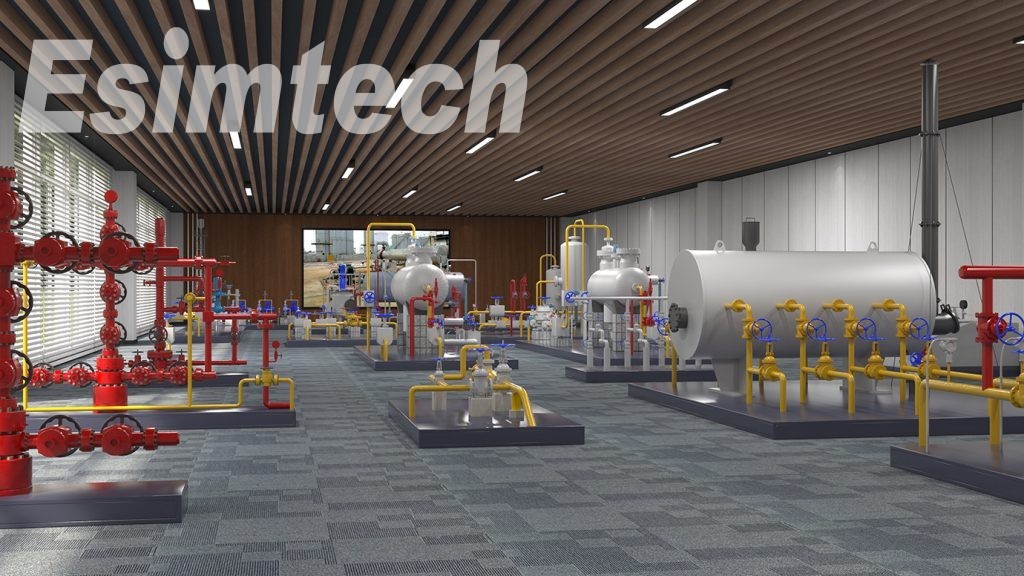Building the Giants Offshore Oil Rig Construction Explained
The search for oil has taken humanity to the deepest parts of the ocean. Oil rigs, or offshore platforms, can now drill to depths of over ten thousand feet, with some able to reach even greater depths. These incredible feats of engineering require the latest technology and some of the most skilled workers in the world.
Oil rigs are massive structures designed to extract oil and gas from the depths of the ocean. They are built to withstand the harshest conditions—including extreme weather, high waves, and powerful currents. Offshore platforms are incredibly complex and require extensive engineering, planning, and a variety of construction stages: design, fabrication, transportation, installation, and commissioning.
The construction of deepwater oil rigs is no small feat. It requires years of planning, design, and construction to create a platform that can withstand the extreme conditions of the ocean floor. The engineering challenges are immense, with everything from the size and shape of the platform to the materials used needing careful consideration. During the design phase, engineers and designers collaborate to create detailed plans for the rig, determining its size, shape, and features. This phase is critical for ensuring safety and functionality.
The design phase involves extensive planning and calculations. Environmental conditions at the rig’s location—such as water depth, currents, and wave height—are analyzed, as the ocean can generate waves over 100 feet high. Platforms must be designed to flex and move with these waves. The types of oil and gas reserves to be extracted also influence the choice of drilling equipment. Once the initial design is complete, engineers create detailed 3D models using computer-aided design software. These models help test different scenarios and refine the design as needed.
Fabrication and Specialized Materials
After design, the fabrication stage begins. This is when the various components of the rig are built—including the drilling platform, subsea systems, and living quarters. These components are typically constructed in different locations and then transported to the site for assembly. Specialized fleets of ships and boats are required to maneuver the massive platforms through the world’s most challenging waters.
The fabrication process is highly specialized and demands great skill. Components are built in large facilities equipped with the latest technologies. Materials are carefully chosen to withstand harsh offshore environments. For example, the drill bit used in deepwater drilling is often made from diamonds, as diamonds are the hardest material on Earth and can withstand extreme conditions.
Stage Main Activities Design Site analysis, engineering plans, 3D modeling Fabrication Building main modules, quality controls, specialized materials Transportation Loading, securing, shipping, ocean navigation logistics Installation Assembly at site, welding, crane lifts, system connections Commissioning Testing, inspections, safety checks, operational readiness
Transportation and Ocean Logistics
After fabrication, the rig is transported to its final location in the ocean for assembly. This requires another specialized fleet to maneuver the rig through dangerous waters. The transportation process is highly specialized and requires careful planning and coordination. Components are loaded onto transport vessels using cranes and other lifting equipment, then secured for the journey.
Transporting an offshore oil rig can take several months and is a massive logistical operation. Upon arrival at the site, the rig’s living quarters, kitchens, and other amenities are ready to make life at sea more comfortable for workers.
For digital planning and scenario training before real-world operations,
Oil and Gas Simulation software is now a standard tool to ensure safe and effective logistics at every step.
Installation and Rig Assembly
Installation is when the various rig components are assembled and connected together, typically on site, and this can take several months. Using cranes, welding equipment, and specialized tools, every piece is positioned and secured. This phase is critical to ensuring that the rig is safe and functional.
Once installation is complete, the rig enters the commissioning phase—series of tests and inspections to ensure proper function and readiness for drilling. These include pressure, flow, and electrical tests, closely analyzed for safety and reliability.
With the rig in place, drilling can begin. The process of drilling to such depths is incredibly complex and requires advanced technologies. Every component—from drill bit to pipes and valves—must withstand the extreme pressures and temperatures of the deep ocean.
Technology and Safety Systems
One key technology is the blowout preventer (BOP)—a massive valve on the ocean floor that can seal a well in an emergency to prevent oil spills. The riser system, a series of pipes and valves connecting the rig to the ocean floor, is engineered to handle extreme oceanic pressures and temperatures while allowing the rig to move with the waves.
Despite cutting-edge engineering, risks remain. Accidents can have catastrophic consequences, as seen in the 2010 Deepwater Horizon disaster. The oil and gas industry faces increasing scrutiny, regulation, and calls for shifts toward cleaner and more sustainable energy sources.
For operations and safety training, digital tools such as
Petroleum Simulators are now used worldwide to prepare teams and optimize offshore performance.
A Testament to Human Ingenuity
The construction of an offshore oil platform is a complex and challenging process, requiring expertise and careful planning at every stage. Despite the many challenges, engineers and construction crews have developed innovative techniques to overcome obstacles. As a result, deepwater oil rigs have become some of the most impressive structures in the world, capable of extracting oil and gas from the ocean’s depths.
The next time you see a deep oil rig out at sea, take a moment to appreciate the incredible engineering and construction involved. These structures are not just impressive feats of engineering—they are also critical to the global economy and daily life.
